With just a handful of different types of affordable, readily-available hardware, you can level up your 3D printed projects from limited-use, fragile, plastic toys to full-scale mechanical wonders.
In this guide, I’m going to give you a complete list of which components to buy, what they’re used for, and how they help you make your 3D prints more functional.
I also wanted to make this video because, as you all know, I’m really impatient, and so when I am bottlenecked on a project because I don’t have the parts on hand, I end up paying for it with things like overnight shipping or buying from overpriced local hardware stores.
Instead, I’ve learned that by ordering in advance, and keeping all different types of hardware and parts on hand “just in case,” I can avoid paying exorbitant amounts for them when I need them in a pinch.
So without much further adieu, let’s dive right in, starting with the obvious, but stick around to the end, because I also have some surprising, lesser-known, and downright funky goodies I know you haven’t thought of yet.
What Are The Must-Have 3D Printer Accessories and Hardware?
Here is my full list of essential 3d printing hardware:
1. Nuts, Bolts, and Washers
Like I said, we’re going to be starting with the obvious, because this was the first piece of hardware I ever ordered for my 3D printed projects, and without a doubt, it’s the single most used category of hardware.
I’m talking, of course, about nuts, bolts, and washers!
I’m quite sure that you’ve encountered all sorts of 3D prints that call for various types of nuts and bolts, ranging from mounting things on your honeycomb wall or 3D printer, to bolting them together, or even reinforcing different parts.
In fact, if you’ve ever built a Prusa printer, you know just how much you can level up your prints just by adding bolts, nuts, and square nuts.
Now, I don’t actually keep square nuts on hand, but I do keep a variety of nuts, bolts, and washers of different lengths and sizes.
For the purposes of 3D printing, I recommend everyone to keep M2, M3, M4, and M5 bolts, plus the complementary washers and nuts.
You can, if you want, keep M6 parts on hand, but to be honest, I have only ever used them on my Micro Jib project, which, if you haven’t seen yet, you can check out here.
What about length? Well, you never know which lengths you’re going to need, and while you can cut down longer bolts to size, it is kind of a pain…
That’s why I love the ready-made variety packs you can get on AliExpress and other places, which offer a handful of each size, usually from 5mm up to 20mm… Though, for M3 and M4, I have found that I often need longer screws, such as 25, 30, or even 35mm, so I keep some of those on hand.
As a general rule of thumb, I suggest you live by the rule I’ve lived by for years: If you need something once, order extra – because you’re likely to need it again.
Now, before we move on to the next type of hardware, just a quick comment on color and shape.
In my experience, these types of flat-headed bolts will fit in more situations than any other type, and unlike cone-headed bolts, they won’t split your 3D prints.
As for color, choose whatever color you like… personally, I really prefer anodized black for all my bolts, as you can tell from any of my projects.
2. Heat-Set Inserts
Up next is another one that may seem obvious, but you’d be surprised how few people keep them on hand. I’m talking, of course, about Heated Inserts.
For the uninitiated, a heated insert is a knurled and threaded piece of brass that you insert into your print with a soldering iron.
Of course, you can just make the holes smaller than your screws and screw directly into them – and in fact, Stefan from CNC kitchen has done some research and experimentation that proved that doing so is surprisingly strong.
But, if you plan to screw and unscrew into your part multiple times, heated inserts not only offer superior strength, but they also don’t degrade over time.
In fact, I’d say that no one accessory will “level up” your 3D prints as much as heated inserts, in fact, if you look around at the professionally-made electronics and plastic accessories in your life, you’ll find no shortage of heated inserts there, too.
For this reason, they’re also really useful things to have around for fixing just about anything.
For more information on heated inserts, I recommend checking out one of my favorite channels, CNC Kitchen, where you can see research on various types of inserts, which ones work better, tutorials on how to design and modify your parts to best accept the inserts, and even pick up some ultra high quality ones made by CNC kitchen themselves.
Personally, I only keep M2, M3, and M4 inserts on hand, and I’ve never had a need for any bigger or smaller ones.
Oh, and make sure that you get a “flat-nosed” soldering iron tip to go with it! That will make inserting them evenly a whole lot easier.
3. Magnets
The next hardware goodie I’d like to share with you all is neodymium magnets.
These super-strong little magnets can add all sorts of functionality to your prints, such as securing them to a base, in the case of gridfinity bins, closing different boxes and latches, and even attaching your prints together.
I, for example, use Neodymium magnets in my designs for the Bitcoin Statuettes that I sell, which enable me to create secret hidey holes for Bitcoin wallets.
There are tons of designs out there that utilize magnets, and unfortunately, they are not all the same size.
The most common sizes you’ll find are 4mm, 5mm, and 6mm diameters, but alas, there are also different thicknesses of each of those diameters.
Gridfinity, for example, uses 6 x 2mm magnets, whereas other models, such as this hardware wallet case, for example, or my very own Bitcoin statuettes, use the more common 5 x 3mm magnets. And I’ve even designed some parts that use the itty-bitty 3mm magnets, where necessary.
Your best bet, then, is to just buy an assortment of magnets, and store them nice and neatly in a gridfinity container.
Personally, I keep 3×3, 4×2, 5×1, 5×2, 5×3, 6×2, and 8x3mm on hand at all times. These magnets aren’t expensive, and while you can “fudge it” on depth, you don’t want to get stuck not having the right diameter.
One note on Neodymium magnets, though: You can insert them with either glue, friction, or heat – but beware.
If you heat them past 80 degrees Celsius, they will permanently demagnetize.
For this reason, if you want to use heat to insert them, make sure you have an adjustable-heat soldering iron which operates at such low temperatures. Or just use CA glue!
4. Bearings
Ball bearings can be a little intimidating, because their number conventions are confusing.
What does 608 mean? What is the difference between ZZ and RS? But fear not, because frankly, I don’t know the answers to those questions, either.
That’s because the vast majority of 3D print projects that use bearings stick with the conventional 608-2RS bearings, which translates to 8x22x7mm.
I’ve made the mistake in the past of ordering different ones, and I never ended up using them, though, I suppose it’s not too difficult to modify the STL files of your desired project to make the diameter of the rod a little bigger.
I’ve used bearings in a lot of different projects, ranging from the 3D printed turntable in my 3D printed tools article, to built-in, removable, and low-friction spool holders in my 3D printer enclosure, the “TUSH” free-standing spool holder I use with my 3D pen, and even in this failed attempt at a 3D printed drill that didn’t make the cut for one of my videos.
Again, these projects, except for the drill, all used the same types of bearings, and so it really makes sense to keep a dozen or so 608 bearings on hand at any given time.
Plus, with this neat gridfinity holder, you need not worry about them taking up space or rattling around in your hardware drawer.
5. T-Nuts
Up next, let’s talk about T-nuts.
With the vast majority of 3D printers today using aluminum extrusions, it has become really easy to securely mount things to your 3D printer – and all you need are these wing-shaped nuts to do it.
This could mean changing or improving your spool holder, mounting a gridfinity base on your printer, attaching a camera arm or a raspberry pi touch screen, or even going as far as I did with my CR-10 V3, and converting it into an all-in-one unit with the electronics mounted underneath.
These T-nuts make it super simple!
Sure, you could 3D Print these, and I have, but just like with heated inserts, if you want longevity and the ability to adjust whatever it is you’ve mounted more than a few times, it really pays to order some metal ones.
Personally, I only ever use M3 and M4 T-nuts, and so I’d recommend you only keep those on hand.
6. NFC Chips
Here’s one that I think is going to surprise you: NFC chips.
Most of us probably don’t use our phone’s NFC readers much outside of paying for things with Apple Pay or Google Pay, but that’s a real shame.
Scanning an NFC chip is fast and easy, and adds an interactive element to your 3D prints.
You could, for example, put your contact information into an NFC chip and embed it in a piece of artwork you design, so that people can contact you to commission a work.
Or you could embed a link to a video onto a sign, where people can tap to scan for a video tutorial.
I recently printed a company logo business card holder, and though I didn’t have time to actually do this before the conference, I wish I had encoded a virtual business card into an NFC chip so that people could tap their phones instead of taking a physical business card.
If you want to take this one step further, you can also program your phone to do things based on which NFC chips you tap.
For example, you can automate things in Apple’s Shortcuts app, or using the NFC chip feature in the smart home automation platform HomeAssistant, so that different things happen when different people scan the NFC chip. For example, you could 3D print a remote control dock, and embed an NFC chip in it.
When any member of the family taps that NFC chip with their phone, it could switch the TV and home theater system on, and switch the Netflix or Apple TV to their personal profile automatically.
This same idea could be applied throughout the house: tap your phone on your 3D printed key holder when you walk in the door to set the lights, music, and AC the way you personally like them, etc.
You can even make your own 3D printed NFC Bitcoin credit card, a 3D printed phone case that contains your contact information in a chip.
These easy-application NFC chips are small, easy-to-use, and really cheap. All you need to program them is an NFC-capable phone.
So if you want to add some interactivity to your prints, definitely check them out!
7. Springs
Recently, I’ve found a lot of prints that have called for either push or pull springs, such as the popular filament cutter, or that failed hand-drill I mentioned before.
The problem is, unlike heated inserts, nuts and bolts, and other items on this list, I haven’t been able to find a decent “assortment kit” of springs with different diameters, lengths, and strengths.
Frankly, I definitely don’t need 100 pieces of the same spring! Instead, what I’ve started doing is “collecting” springs as I come across them, and harvesting them out of things that I’m going to throw away.
Old pens that you get as free promotions, for example, are probably not candidates for a refill cartridge – but make sure you harvest those springs before you throw them away.
Same goes for these silly halloween headbands, and a surprising amount of stuff you probably throw away every day.
Generally speaking, it’s a good idea to spend a couple of minutes taking things apart before you throw them away (or hopefully recycle them), to see what screws, nuts, bolts, springs, wires, sensors, cables, cameras, fans, etc you might be able to use in future projects.
8. Fans
I know, I know. Fans are not really a “hardware” item so much as an electronic item, and you’re probably not going to “embed” them into your prints.
And yet, I have to say that different types of fans are one of my most used accessories for my 3D printing projects.
I’ve used numerous fans to upgrade my 3D printing enclosure, add cooling to the raspberry pi’s on each of my 3D printers, cool down my networking closet, improve the ventilation on my filament dryer, and of course, replace faulty fans on my 3D printers.
Personally, I keep a variety of fans around, including 40mm, 60mm, 80mm, and even 120mm.
I generally keep an assortment of 5v, 12v, and 24v fans, so that I have my bases covered for Raspberry Pi or USB applications, standard 12V electronic applications, and 3D Printer applications.
I also like to keep a blower fan around, just in case something goes awry on one of my 3D printers.
These fans are crazy affordable if you buy them on AliExpress, and like everything else on this list, if we’re ordering them “just in case,” we aren’t in any rush, and can afford to buy cheap with slow shipping.
9. Thermal Switches
Here’s another one that is technically more of an “electronic” goodie, but if I’m going to talk about fans, then I need to talk about this one.
I don’t know about you, but I’m not super great at programming arduinos and stuff like that.
Therefore, years ago, I found a fun “workaround” for adding thermal sensitivity to my projects – thermal switches.
These switches are simple to solder into a circuit, and will either turn on or turn off that circuit at certain temperatures.
I primarily use them to turn on fans automatically in my printer enclosure, electrical closet, or filament dryer, but you can also use them to disable electronics at certain temperatures to prevent damage.
For those of us who aren’t great at programming, this is a quick and easy way to add functionality, and it’s one of the reasons I slap so many fans on things all over my house.
When ordering, just make sure you select the right temperatures (I like to keep an array of them, from 25C to 45C), and also pay special attention to whether or not the switch will turn ON at that temperature or OFF at that temperature!
10. Keychain Rings
Here’s one that might be a little silly, I admit, but it’s come in handy enough times that I keep these in a gridfinity bin.
Keychain rings!
In the past, I’ve mentioned some cool prints, such as the mini fillet gauge or the hole measuring tool featured in the 3d printed tools list, which can be really useful to keep on your keychain.
But I’ve also 3D printed lifesaving trinkets such as this self-defense cat for my wife, these shopping cart release keys, and more.
Plus, if you, like me, love to give little 3D printed gifts to your friends and family, I can think of no cooler way to make sure they enjoy them day-to-day then by making keychain versions of those gifts.
11. Weights
We’ve come to the end of our list, and I’ve saved probably one of the most important accessories for last.
Let’s talk about weights.
One of the coolest things about 3D printing is that you can save material and weight by creating hollow prints that would otherwise be impossible.
With that said, there will inevitably be some prints that you want to add some weight to, either for mechanical and functional reasons, or just to give them a more hefty, high-quality feel.
As I mentioned before, in my 3D printed Jib tutorial, I failed to plan ahead when it came to weights.
I planned to use sand – which just wasn’t heavy or practical enough, and this failure to plan ended up costing me time and money.
I was quoted as much as $140 for ball bearings just to weigh down the jib arm!
While I ended up only spending about $30 on screws, I could have saved even more had I been prepared.
Fortunately, you guys were really great about sharing a ton of helpful comments about how I could have saved myself some money and headache.
Many of you recommended picking up some fishing weights – though those were still expensive to get shipped from China, and I don’t know where to get them locally. Others had the fantastic recommendation of dropping by tire change places and asking for their used tire weights – which I fully intend on doing next time I pass one.
In the meantime, I’ve begun a new habit that I want to encourage all of you to adopt.
In the past, when I would break a drill bit, strip a screw, or accidentally leave something out to rust, I would simply toss the metal pieces into the recycling bin, but no more!
Now, I collect these little treasures in a special bin, which I save up for the next print I want to weigh down.
It’s slow going, but with a toddler around the house who loves to help dad with projects, I do get a fair number of stripped screws and broken drill bits.
Plus, to help “expedite” this project, I recently swallowed my pride and went dumpster-diving at the construction site up the street, which yielded some incredibly heavy rebar, so if I need serious weight, I can use a diamond cutting wheel to cut off the appropriate length of rebar and shove that into my prints.
Conclusion
So there you have it, my list of accessories and hardware to level-up your 3D prints. I’d love to know in the comments below if I missed any.
Thanks so much for sticking around to the end, and as always, happy 3D printing!
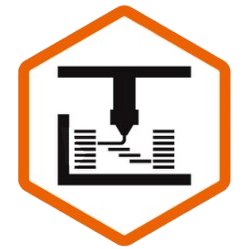


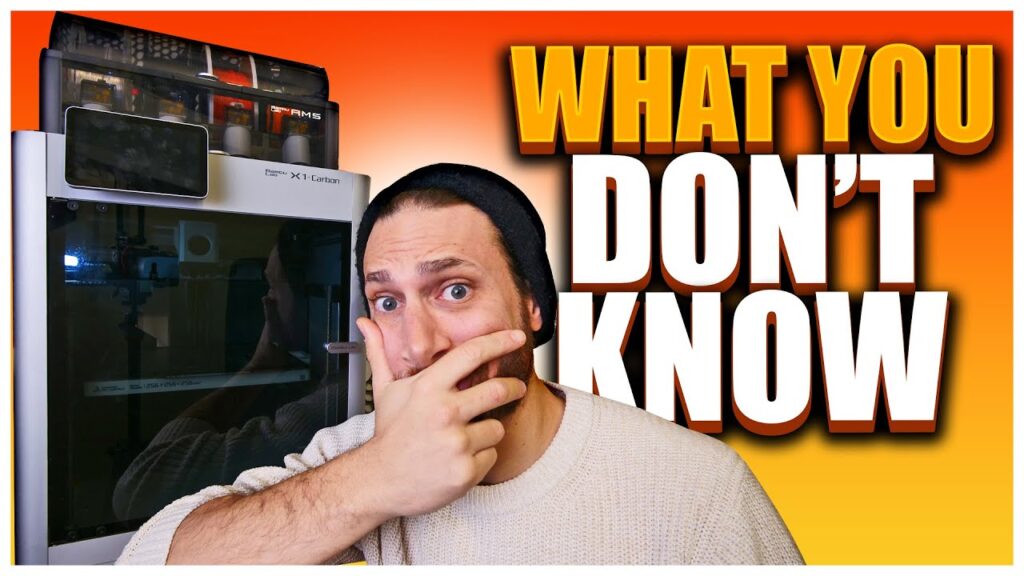

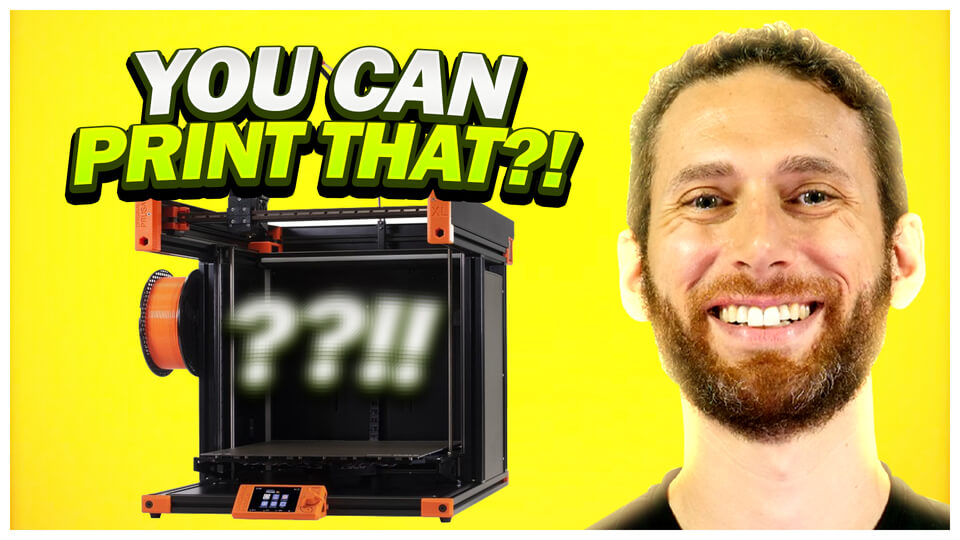
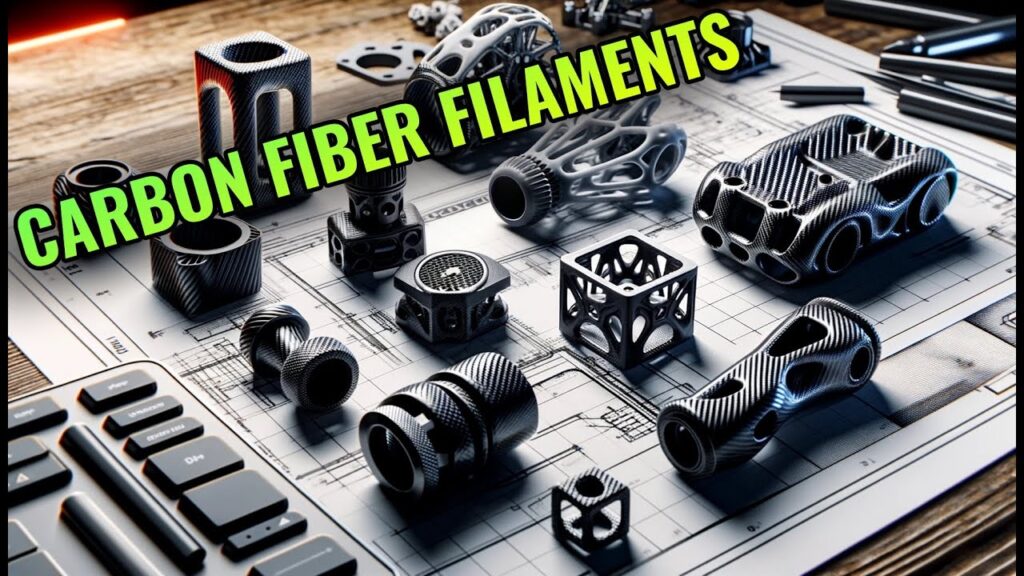

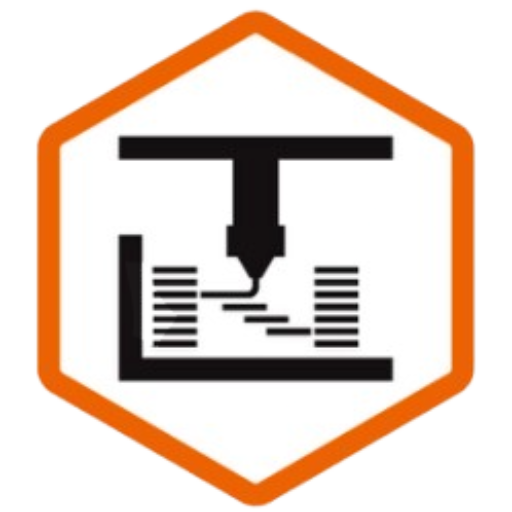
That is a great list, I have a few spares, but the NFC chips are a bit of an odd choice, but brilliant!
You gave me a few ideas, thanks!
Ps I just found you channel and its great!